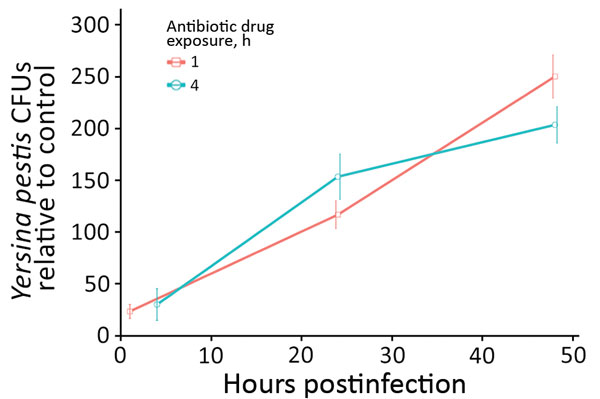Volume 24, Number 2—February 2018
Research
Yersinia pestis Survival and Replication in Potential Ameba Reservoir
Figure 5

Figure 5. Intraameba Yersinia pestis abundance in Dictyostelium discoideum across 2 postinfection antibiotic drug exposure periods, 1 hour and 4 hour. In D. discoideum, the abundance of viable intracellular Y. pestis was significantly greater at each successive time point (24 and 48 hours) after the 1-hour antibiotic drug treatment (p = 0.01 and p = 0.002, respectively). After the 4-hour antibiotic drug treatment in D. discoideum, the abundance of viable intracellular Y. pestis at 24 and 48 hours was significantly greater than at 4 hours (p = 0.008 and p = 0.001, respectively). The abundance of viable Y. pestis within D. discoideum at 48 hours postinfection was not significantly different between the 1-hour and 4-hour antibiotic drug treatments (p = 0.1624). Viable intracellular Y. pestis abundance was significantly greater in D. discoideum compared with all other species at 48 hours postinfection (p<0.001).